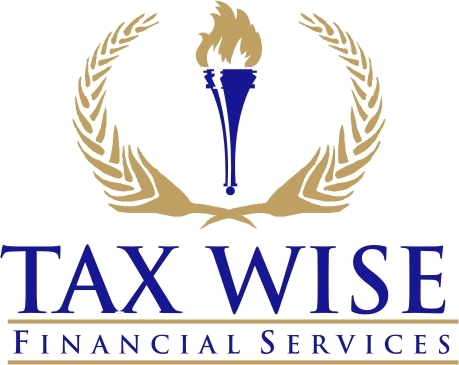
Building long-term wealth requires more than just picking winning stocks—it’s about strategic tax planning too. For U.S. investors, combining a Traditional IRA and tax savings from investing in dividend stocks is one of the most efficient ways to grow retirement funds while reducing yearly tax burdens.
In 2025, as Americans face changing tax brackets and market volatility, understanding how dividend investments interact with a Traditional IRA is more important than ever. Let’s explore how this combination can maximize your returns and minimize your taxes—especially when dividends are reinvested.
What Is a Traditional IRA and Why It’s a Powerful Tax Tool
A Traditional IRA (Individual Retirement Account) allows Americans to save for retirement using pre-tax dollars, meaning your contributions may lower your taxable income today. According to the IRS, investment growth inside a Traditional IRA is tax-deferred until you withdraw the funds.
Key benefits:
- Tax-deductible contributions: Lower your current taxable income.
- Tax-deferred growth: No taxes on dividends, capital gains, or interest until withdrawal.
- Retirement control: Withdraw after age 59½ without penalty; RMDs start at 73.
When you add dividend-paying stocks into your Traditional IRA, you’re compounding not just investment returns but also tax-savings advantages. That’s the foundation of the phrase “Traditional IRA and tax savings from investing in dividend stocks.”
How Dividends Work in a Traditional IRA
In a taxable account, dividends—especially qualified ones—are taxed annually. But inside a Traditional IRA, dividends grow tax-deferred, meaning no yearly taxes on those payments.
Example:
- In a taxable account, a 4% dividend yield might lose 15% to taxes each year.
- In a Traditional IRA, the full 4% stays invested, compounding faster over decades.
That deferral creates the tax savings from investing in dividend stocks through a Traditional IRA—your money works harder and grows faster because it isn’t eroded by annual tax drag.
How Do Reinvested Dividends Boost Long-Term Tax Savings?
This is the heart of the strategy.
When dividends are automatically reinvested inside your Traditional IRA:
- 100% of dividends are reinvested, since no taxes are withheld annually.
- Compounding accelerates because both principal and dividends generate future dividends.
- Tax deferral magnifies growth, giving you decades of untaxed compounding.
- Potentially lower taxes later, if your retirement income falls in a lower bracket.
For example, $10,000 invested in dividend stocks yielding 4% annually could double faster inside a Traditional IRA than in a taxable account—simply because reinvested dividends are untaxed until withdrawal.
That’s why understanding Traditional IRA and tax savings from investing in dividend stocks is crucial: reinvested dividends create a compounding engine that delivers exponential benefits over time.
Tax Treatment: Traditional IRA vs. Taxable Account
| Feature | Traditional IRA | Taxable Account |
|---|---|---|
| Annual dividend taxes | ❌ None (tax-deferred) | ✅ 0–20% (qualified) |
| Contribution deduction | ✅ Yes (within income limits) | ❌ No |
| Growth | Tax-deferred | Taxed annually |
| Withdrawal tax | ✅ Ordinary income | ✅ Capital gains rates |
| Ideal for | Long-term compounding | Short-term liquidity |
Takeaway: While qualified dividends receive favorable rates in a taxable account, the deferral advantage of a Traditional IRA usually outweighs that for long-term investors.
Tax-Efficient Investment Strategy for 2025
Step 1: Contribute to Your Traditional IRA
For 2025, contribution limits are expected to remain around $7,000 ($8,000 if 50 or older). Contributions may be deductible, depending on your income and retirement coverage.
Step 2: Choose Quality Dividend Stocks or Funds
Focus on U.S. dividend aristocrats, ETFs, or mutual funds that have long track records of stable payouts and dividend growth.
Step 3: Reinvest Automatically
Set your IRA to automatically reinvest dividends to maximize compounding power.
Step 4: Plan Withdrawals Smartly
When you retire, coordinate withdrawals to minimize tax impact—especially after age 73 when RMDs apply.
Step 5: Diversify Across Accounts
Balance your portfolio between:
- Traditional IRA (for dividend stocks and tax-inefficient assets)
- Roth IRA (for tax-free growth)
- Taxable account (for liquidity and capital-gains efficiency)
Why Traditional IRA and Tax Savings from Investing in Dividend Stocks Matter in 2025
In 2025, higher interest rates and inflation make reliable dividend income attractive. Holding dividend stocks within a Traditional IRA protects that income from yearly taxes, improving after-tax returns—particularly for middle-income investors.
How the Traditional IRA Enhances Dividend Reinvestment
Inside a Traditional IRA, you avoid the drag of annual taxation on reinvested dividends. This boosts total return, especially over 20- or 30-year horizons.
Pros and Cons of Using a Traditional IRA for Dividend Investing
✅ Pros
- Immediate tax deduction on contributions
- Tax-deferred compounding of reinvested dividends
- Simple reinvestment automation
- Long-term wealth accumulation
⚠️ Cons
- Ordinary income tax applies to withdrawals (not lower qualified-dividend rates)
- RMDs at 73 may increase taxable income
- Early withdrawal penalties before 59½
- Potential future tax-rate increases
Best Practices for Tax-Smart Dividend Investing in 2025
- Automate reinvestments: Keep dividends compounding within your Traditional IRA.
- Avoid high-turnover funds: Lower trading activity reduces hidden tax drag.
- Rebalance annually: Align dividend yields with your long-term retirement goals.
- Monitor tax laws: The 2025 tax landscape may shift under new fiscal policies—stay updated.
- Consult a CPA: A professional can tailor strategies for your bracket and goals.
External Resource
For official tax rules and contribution limits, visit the IRS Traditional IRA page.
Conclusion: Build Smarter Tax-Efficient Wealth in 2025
A Traditional IRA and tax savings from investing in dividend stocks form a cornerstone of smart retirement planning. By reinvesting dividends and allowing them to compound tax-deferred, investors can significantly enhance long-term growth.
In 2025, with changing economic conditions and tax laws, this strategy remains one of the most reliable ways to secure a tax-efficient and stable retirement future.
At TaxWise Corp, we help small business owners across the USA navigate the complex tax landscape, optimize deductions, and protect their financial future. Don’t leave money on the table, start planning today!
Contact TaxWise Corp to schedule your 2025 Tax Planning Consultation and ensure your business saves every possible dollar.


